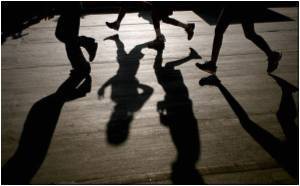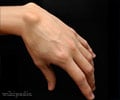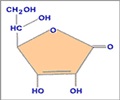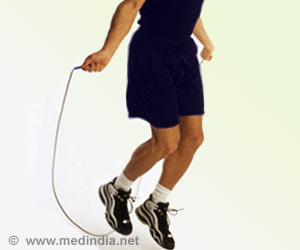Demonstration of the superiority of a specific technique to perform anterior cruciate ligament (ACL) reconstruction in children was made by a new study.

Twenty years ago, very few children or adolescents presented at doctors'' offices with ACL injuries. Today, these injuries are common because children and young adolescents are participating in sports earlier in life and at a higher level of competition. Young athletes are also increasingly specializing in one sport, putting them at risk for overuse injuries once only seen in professional athletes. In addition, since the Title IX ban on sex discrimination in school sports, the number of female athletes has increased and females are more prone to ACL injury.
Performing ACL reconstruction in patients who are still growing is difficult. The ACL can be thought of as a rope that connects the thighbone to the shinbone. The rounded ends of the thighbone and shinbone are called epiphyses and the ACL dangles between them. Open growth plates are located directly behind the epiphyses in children and adolescents, but not in adults.
In an adult ACL reconstruction, the torn ligament is removed from the knee, holes are drilled through the ends of the thighbone and shinbone, and a tissue graft is inserted in place of the removed ligament. In this way, the reconstruction mimics the natural ACL footprint. ACL reconstruction is difficult in children because if an adult-type reconstruction were performed, the graft would cross the growth plates, potentially causing damage that can result in uneven limb lengths or angular deformities. Thus, for many years, ACL injuries in children were managed with benign neglect, or surgical procedures that were not anatomic and required large incisions to avoid injuring the growth plate. In recent years, however, clinicians realized that non-operative treatment resulted in damage to menisci and articular cartilage thereby leading to early arthritis. Advances in technology, instrumentation and techniques are now available which allow surgeons to perform the AE reconstruction without risk of injury to the growth plate. These procedures are more technically demanding and are available at only a few centers around the country including HSS.
In the study, researchers, including Dr. Cordasco and HSS pediatric orthopedic surgeon Daniel Green, M.D., compared two ACL reconstruction techniques for children that minimize contact with the growth plate: the AE technique and the over-the-top reconstruction (OT). In the OT, surgeons slide a graft through a hole drilled into the shinbone, similar to an adult ACL surgery, but the graft is then attached to the back of the thighbone. The OT requires an open incision and does not mimic the natural ACL footprint. In the AE, surgeons mimic the adult surgery, but the ligament is only attached to the epiphysis and does not cross into the growth plate. The AE is performed arthroscopically and mimics the natural ACL footprint. While the AE has been around for ten years, it has been drastically refined in the last few years, due to advances in arthroscopic technologies.
The researchers obtained ten human cadaver legs that had their ACLs intact. They fixed the legs firmly in cement and, using a robot, they put each of the legs through a series of motions to test knee stress and strain. They tested stability when the knee was pivoting, for example, and they measured contact stresses by delivering pressure to the leg and evaluating the stress experienced at different areas of the joint.
Advertisement
The goal of ACL reconstruction is to stabilize a joint enough so that an individual can participate in sport without damaging other knee structures, but not to stabilize the knee so much that it overconstrains the knee. "If we overconstrain a joint, whether it is a knee or shoulder, you lose motion, but more importantly, you can develop an arthritic condition," said Dr. Cordasco. "Obviously in a ten year old, if you have an overconstrained joint, that is going to mean that by the time they are 30 or 40, they might need a joint replacement."
Advertisement
While other studies have compared joint stability (kinematics) of the two procedures, this is the first to study contact stresses. "Both reconstructions improved the kinematics and contact stresses compared to the deficient state, but neither reconstruction completely restored normal kinematics and contact stresses," said Dr. Cordasco. "The OT had significantly higher contact stresses at 15% of flexion compared to the AE. This is important because most field and court sports involve knee function close to this position. The OT requires an arthrotomy, meaning an open incision, and therefore has increased morbidity with associated soft tissue trauma. We believe the AE is preferable in the pediatric and young adolescent population."
The study has been nominated for the 2012 Herodicus Award given annually by the Herodicus Society at the AOSSM meeting for the best paper submitted by an orthopedic resident or sports medicine fellow. Moira McCarthy, M.D., a fifth year orthopedic surgery resident at HSS will present the paper at 8:49 a.m. on July 13. Other HSS authors involved in the study were Scott Tucker, M.Eng., and Carl Imhauser, Ph.D.
About Hospital for Special Surgery
Founded in 1863, Hospital for Special Surgery (HSS) is a world leader in orthopedics, rheumatology and rehabilitation. HSS is nationally ranked No. 1 in orthopedics, No. 2 in rheumatology, No. 19 in neurology and No. 16 in geriatrics by U.S. News & World Report (2012-13), and is the first hospital in New York State to receive Magnet Recognition for Excellence in Nursing Service from the American Nurses Credentialing Center three consecutive times. HSS has one of the lowest infection rates in the country. From 2007 to 2011, HSS has been a recipient of the HealthGrades Joint Replacement Excellence Award. HSS is a member of the NewYork-Presbyterian Healthcare System and an affiliate of Weill Cornell Medical College and as such all Hospital for Special Surgery medical staff are faculty of Weill Cornell.
Source-Newswise










